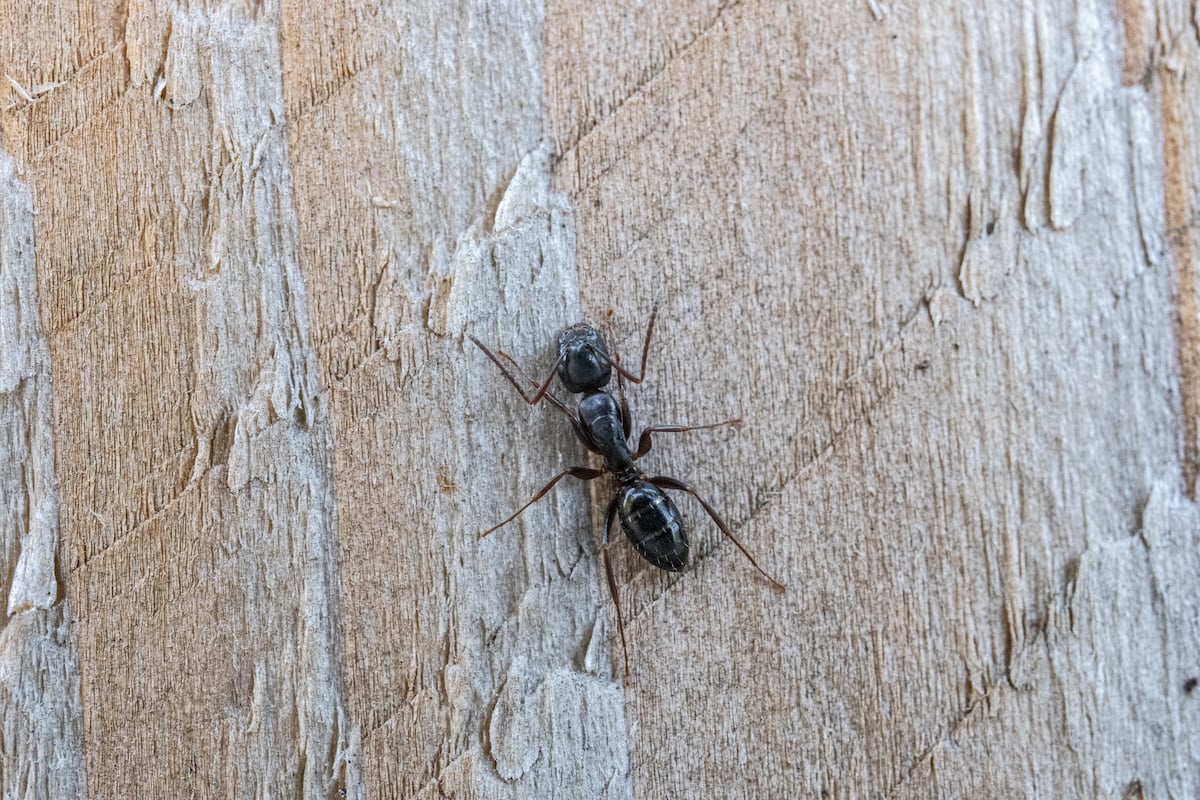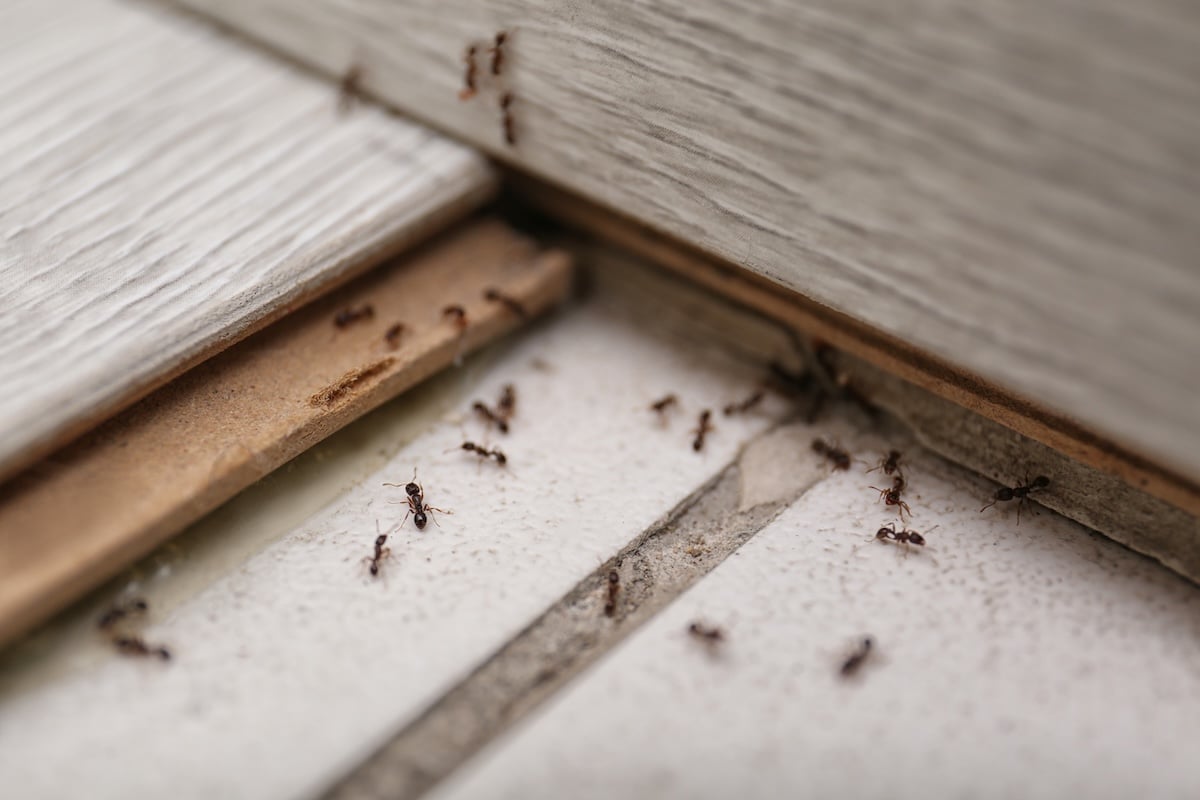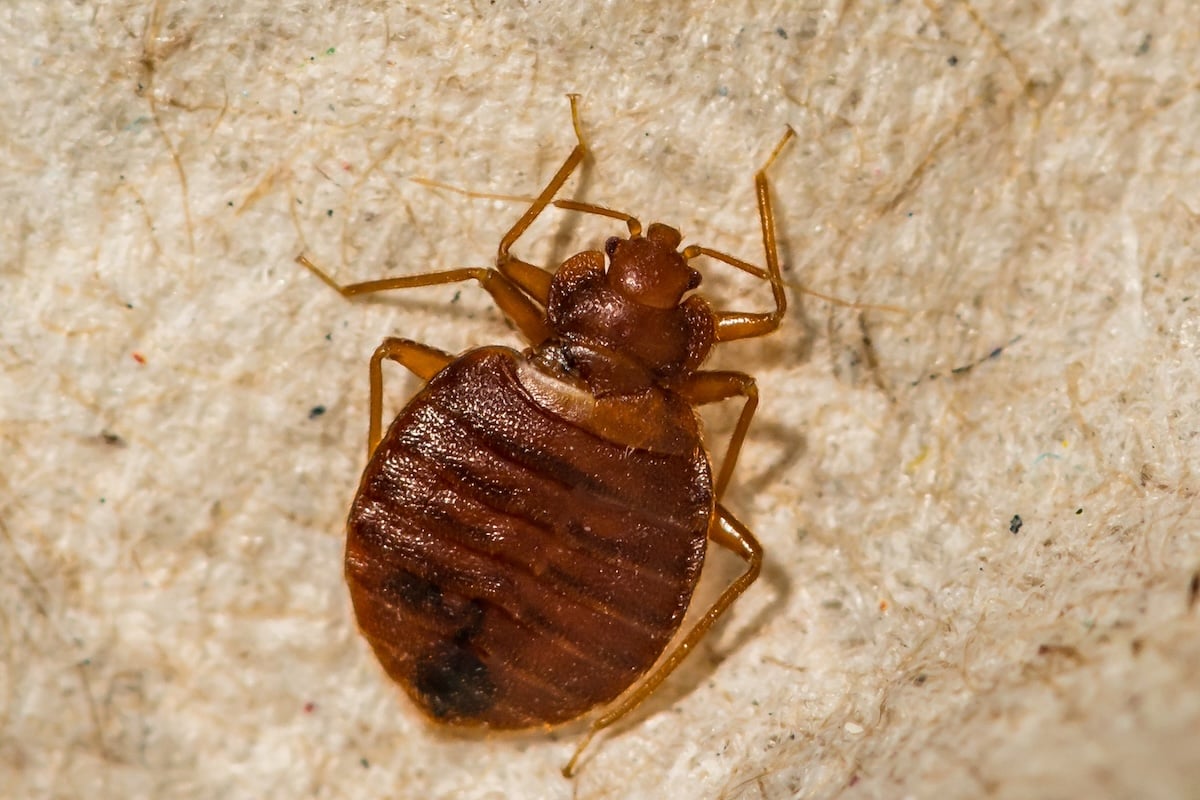7 Signs Of Carpenter Ants In Your House: And What To Do Next
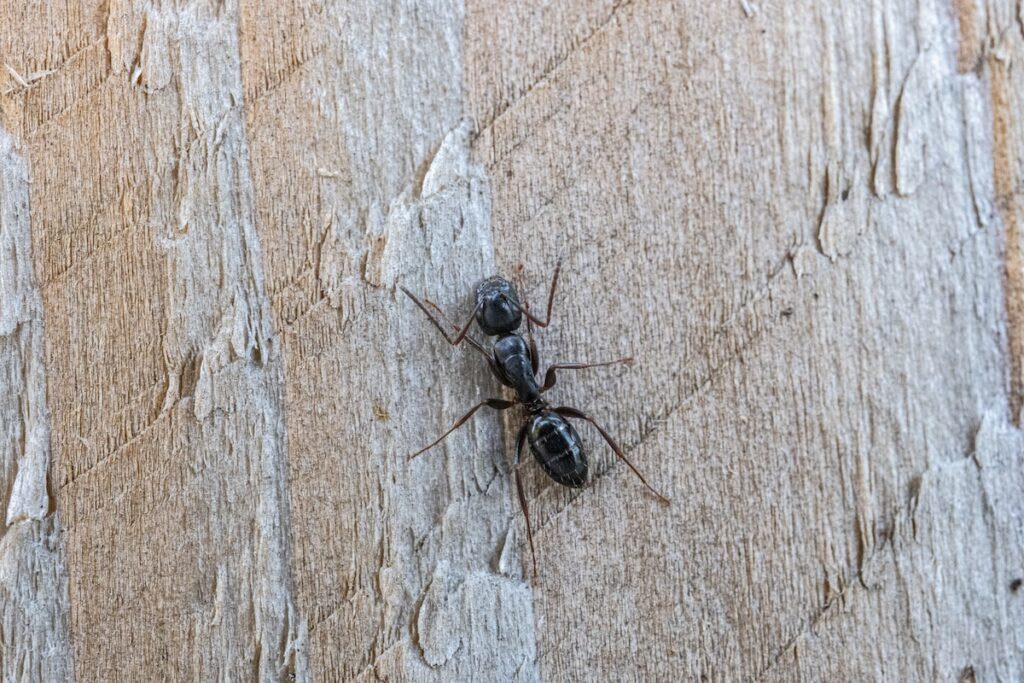
Noticing the signs of carpenter ants in house settings can be unsettling, especially if you’re not sure how serious the problem is. Unlike nuisance ants that simply forage for food, carpenter ants can actually damage the wood in your home, which makes spotting them early very important. By understanding the signs, homeowners can protect their property from unnecessary damage and costly repairs.
- Structural risks: Carpenter ants don’t eat wood, but they hollow it out to create nests, which can weaken the structure of your home.
- Difficult detection: These ants often work behind the scenes in walls, beams, and crawl spaces, making it tricky to notice them right away.
- Professional help matters: Prompt action is key to avoiding long-term issues and ensuring your home stays protected.
🐜 Why Carpenter Ants Are Different From Other Ants
Carpenter ants often get confused with termites, but they behave differently. While termites consume wood as food, carpenter ants only excavate it to build nests. This means their presence still threatens your home’s structural integrity, but in a unique way. Recognizing their distinct behavior is crucial for choosing the right solution.
In places like Appleton, WI, and surrounding areas, carpenter ants are more common than many homeowners realize. They thrive in areas with moisture, decaying wood, or easy food sources. Left unchecked, colonies can grow large and spread throughout your property.
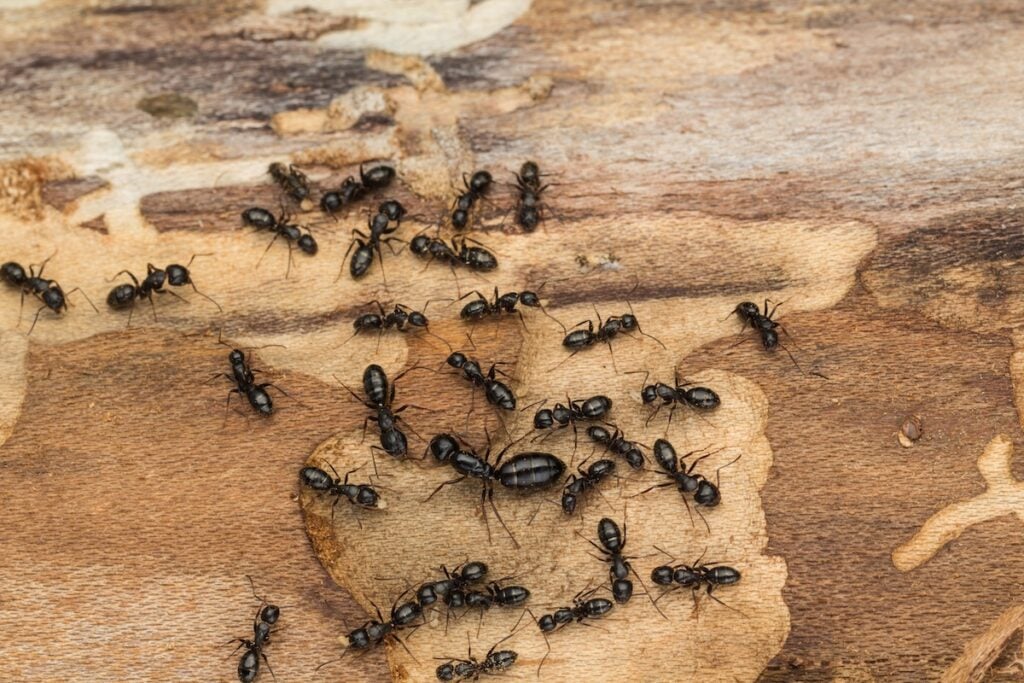
Identifying Carpenter Ants
- Size: Carpenter ants are larger than most household ants, measuring between ¼ to ½ inch long.
- Color: Most are black, though some may have reddish or dark brown bodies.
- Wings: During swarming season, some carpenter ants have wings, which can cause them to be mistaken for termites.
- Behavior: They are most active at night, foraging for food such as sweets, proteins, and dead insects.
Why They Target Homes
- Moisture attraction: Damp or decaying wood is their preferred nesting spot.
- Leaky conditions: Homes with plumbing leaks, roof leaks, or clogged gutters are more susceptible.
- Convenient entry points: Unsealed cracks around windows and doors give carpenter ants an easy way in.
- Nearby vegetation: Overhanging branches and shrubs act as highways into your home.
⚠️ 7 Clear Signs Of Carpenter Ants In Your House
Understanding the warning signs is the first step to protecting your property. Keep an eye out for these indicators:
- Visible Ants Indoors: Large black or reddish ants seen crawling, especially at night, may indicate carpenter ants searching for food.
- Wood Shavings: Fine sawdust-like material (frass) found near walls, beams, or furniture suggests tunneling activity.
- Rustling Noises: A faint crackling or rustling sound inside walls often comes from active colonies.
- Winged Ants: Seeing swarmers (ants with wings) inside your home is a strong sign of a nearby nest.
- Damaged Wood: Hollow-sounding or splintered wood when tapped can indicate ant excavation.
- Moisture Problems: Carpenter ants often nest near damp areas like bathrooms, basements, or under sinks.
- Outdoor Trails: Ants moving in lines between trees, stumps, and your house may signal they’ve made their way indoors.
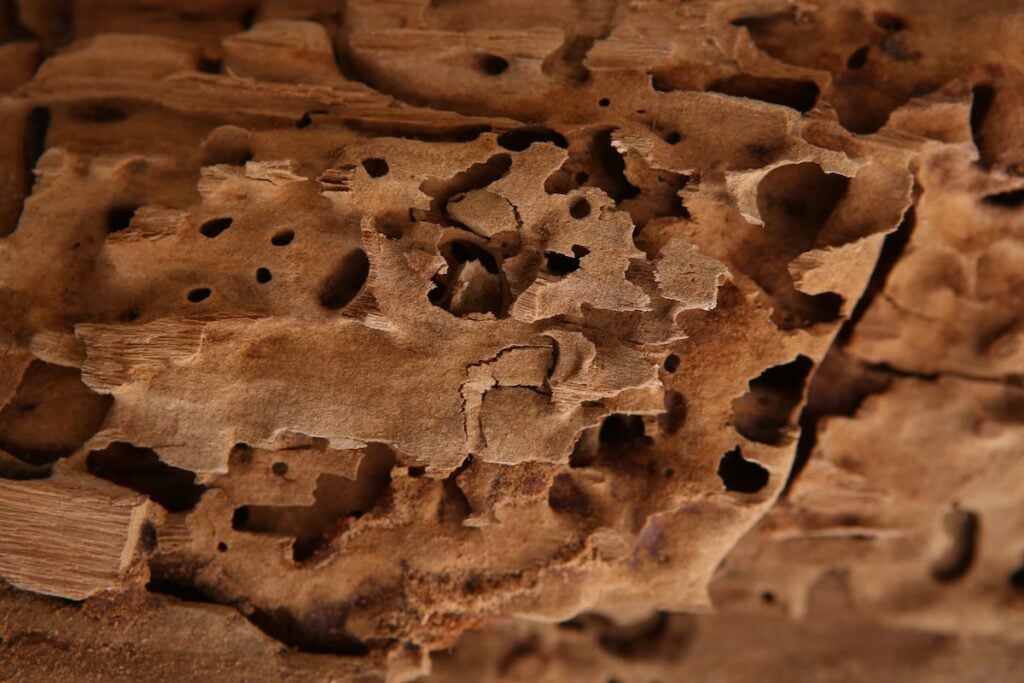
🪵 Common Places Carpenter Ants Hide
Carpenter ants aren’t limited to one area of your house. They often spread out, building multiple satellite nests. Knowing where they hide can help you detect them faster.
Inside Walls and Beams
- Hidden nesting: Ants tunnel into wooden beams, studs, and walls, where they remain out of sight.
- Sound clues: Tapping wood may reveal a hollow sound caused by galleries.
- Long-term risk: Left undisturbed, colonies can grow large and cause significant damage.
Near Moisture Sources
- Bathrooms and kitchens: Leaks under sinks or behind appliances create perfect conditions.
- Basements: High humidity and damp foundations attract nesting activity.
- Softened wood: Ants prefer wood that’s easier to excavate, making water-damaged areas prime targets.
Around Attics and Rooflines
- Roof leaks: Moisture seeping into attic wood creates a haven for ants.
- Poor ventilation: Condensation builds in poorly ventilated attics, attracting colonies.
- Structural impact: Rafters and insulation can suffer damage from ongoing excavation.
❗️ 3 Dangers Of Ignoring A Carpenter Ant Infestation
It might be tempting to ignore a few ants here and there, but carpenter ants can cause real problems if left unchecked. Over time, their tunneling weakens wood structures, potentially leading to costly repairs.
1. Structural Weakening
- Hollow beams: Excavation removes support inside wood, leaving it brittle.
- Weakened joists: Support beams may lose their load-bearing strength.
- Safety hazard: Structural instability puts your home and family at risk.
2. Growing Colonies
- Multiple nests: Colonies expand by creating satellite nests throughout the home.
- Difficult removal: Destroying one nest doesn’t guarantee elimination of the others.
- Fast spread: Colonies can number in the thousands if not treated quickly.
3. Property Value Risks
- Inspection red flag: Pest problems often deter potential buyers.
- Repair costs: Damage from carpenter ants can reduce resale value.
- Buyer hesitation: Unresolved infestations may delay or prevent a sale.
👉 DIY vs. Professional Pest Control
Homeowners often wonder if they can handle carpenter ants themselves. While some steps help reduce risk, a true infestation usually requires professional solutions.
DIY Prevention Tips
- Seal entry points: Caulk cracks around windows, doors, and foundations.
- Fix moisture issues: Repair leaky pipes and clean gutters regularly.
- Maintain landscaping: Trim tree branches that touch your home, as ants often use them as bridges.
When To Call Professionals
- Recurring signs: Ant activity that doesn’t stop after DIY efforts.
- Multiple nests: Evidence of both primary and satellite colonies.
- Widespread damage: Hollow wood, frass piles, and winged ants appearing regularly.
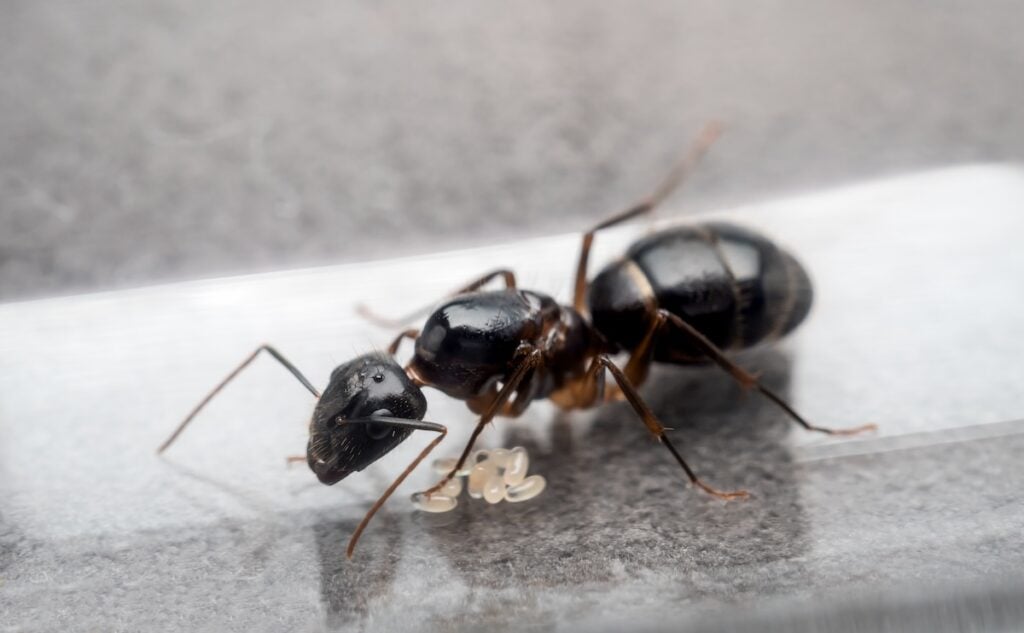
🏠 Keeping Your Home Ant-Free Long Term
Carpenter ants can be persistent, but with the right steps, you can make your home less inviting to them. Combining professional treatment with good maintenance habits keeps your property protected year-round.
Seasonal Inspections
- Early detection: Routine checks catch infestations before they spread.
- Adapt to climate: Seasonal changes in Appleton, WI, and surrounding areas affect activity.
- Peace of mind: Regular inspections mean fewer surprises.
Home Maintenance Habits
- Firewood storage: Keep logs stacked away from the home’s foundation.
- Leak repairs: Address plumbing and roof issues as soon as they arise.
- Proper ventilation: Attics and crawl spaces need airflow to reduce moisture.
Partnering With Professionals
- Expert knowledge: Professionals know where carpenter ants hide.
- Long-term strategies: Treatments extend beyond quick fixes.
- Ongoing protection: A trusted partner ensures infestations don’t return.
🤝 Protect Your Home With Prompt Action
Carpenter ants may not eat wood, but the damage they cause can be just as serious as termites. By recognizing the signs early and taking action, you can protect your home’s structure and value. Homeowners in Appleton, WI, and surrounding areas don’t have to handle infestations alone. Prompt Action is here to provide expert inspections, targeted treatments, and lasting protection.
Don’t wait until the damage is done. Contact Prompt Action today to schedule your carpenter ant inspection and keep your home safe from hidden pests.


